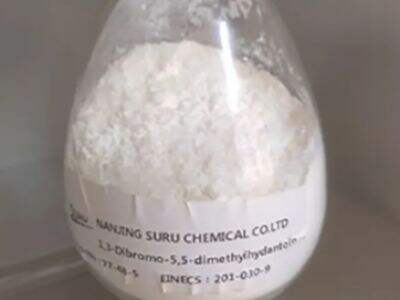Ever wonder how a particular compound, 1,3-Dibromo-5,5-dimethylhydantoin is being used by scientists to fight the resilientness of biofilms? Continuing on with the wonders of this compound, we will touch upon its remarkable antibacterial properties and how it is being used in biofilm treatment.
1,3-Dibromo-5,5-dimethylhydantoin for anti-biofilm
Biofilms are sticky layers of bacteria that can grow on all sorts of surfaces, including your countertops and teeth as well as medical equipment. Biofilms are difficult to remove and can lead to infections as well as other potential health risks. That's where Suru dibromo dimethyl hydantoin comes in. The original is a bacterial killing compound that renders it capable of killing the bacteria responsible for creating biofilm.
The biofilm-busting power of 1,3-Dibromo-5,5-dimethylhydantoin
1,3-Dibromo-5,5-dimethylhydantoin (DBH) offer chemists a countermeasure to difficult biofilm problems that squads of interdisciplinary scientists are loath to touch. When these compounds are applied to the presence of biofilms on surfaces, researchers have been able to cleave apart the biofilm and kill any bacteria housed within. This has been identified as a potential strategy for biofilm control and this is very useful in healthcare environment where most of the infections are due to biofilms.
Innovative insights with the 1,3-Dibromo-5,5-dimethylhydantoin, an outstanding biofilm slimicide
In addition, researchers are beginning to explore new applications for 1,3-Dibromo-5,5-dimethylhydantoin in order to effectively control biofilms. A related approach is the development of coatings that can be used to coat surfaces, and it prevents biofilm formation in the first place. By using Suru dibromodimethylhydantoin proactively in this manner, scientists plan to make biofilm-related issues far less frequent.
Mechanism for Biofilm Noteworthy Activities
Therefore, to efficiently apply compound in biofilm control strategies, it is necessary to understand how this aminated works to kill biofilms. In essence, 1,3-Dibromo-5,5-dimethylhydantoin dissolves the exopolysaccharide matrix of biofilm and makes it accessible to anti-bacterials. With this mode of action, it can kill the biofilm bacteria far more effectively and ensure better results in managing the biofilms.
1,3-Dibromo-5,5-dimethylhydantoin: An Important Component in Biofilm Mitigation Strategies
Finally, the observed 1,3-Dibromo-5,5-dimethylhydantoin effect had demonstrated that it is highly beneficial as a sanitizer agent in biofilm control protocols. The high antibacterial effect and ability to destroy biofilm matrices classifies is as a powerful agent for the eradication even of difficult-to-treat biofilms. This study, which utilizes the activity of 1,3-Dibromo-5,5-dimethylhydantoin as an example and reveals its mechanism of action is paving newer avenues for tackling biofilms. Hopefully through this and further research and development, we will continue see new uses of dibromohydantoin in our ongoing fight with biofilm. This is an area we are passionate about at Suru — creating safer, science-driven biofilm management to improve outcomes.
Table of Contents
- 1,3-Dibromo-5,5-dimethylhydantoin for anti-biofilm
- The biofilm-busting power of 1,3-Dibromo-5,5-dimethylhydantoin
- Innovative insights with the 1,3-Dibromo-5,5-dimethylhydantoin, an outstanding biofilm slimicide
- Mechanism for Biofilm Noteworthy Activities
- 1,3-Dibromo-5,5-dimethylhydantoin: An Important Component in Biofilm Mitigation Strategies

 AR
AR
 BG
BG
 CS
CS
 DA
DA
 NL
NL
 FI
FI
 FR
FR
 DE
DE
 EL
EL
 HI
HI
 IT
IT
 JA
JA
 KO
KO
 NO
NO
 PL
PL
 PT
PT
 RO
RO
 RU
RU
 ES
ES
 SV
SV
 TL
TL
 ID
ID
 LT
LT
 SR
SR
 SL
SL
 UK
UK
 ET
ET
 HU
HU
 TH
TH
 TR
TR
 FA
FA
 MS
MS
 GA
GA
 BN
BN
 BS
BS
 LO
LO
 LA
LA
 NE
NE
 MY
MY


